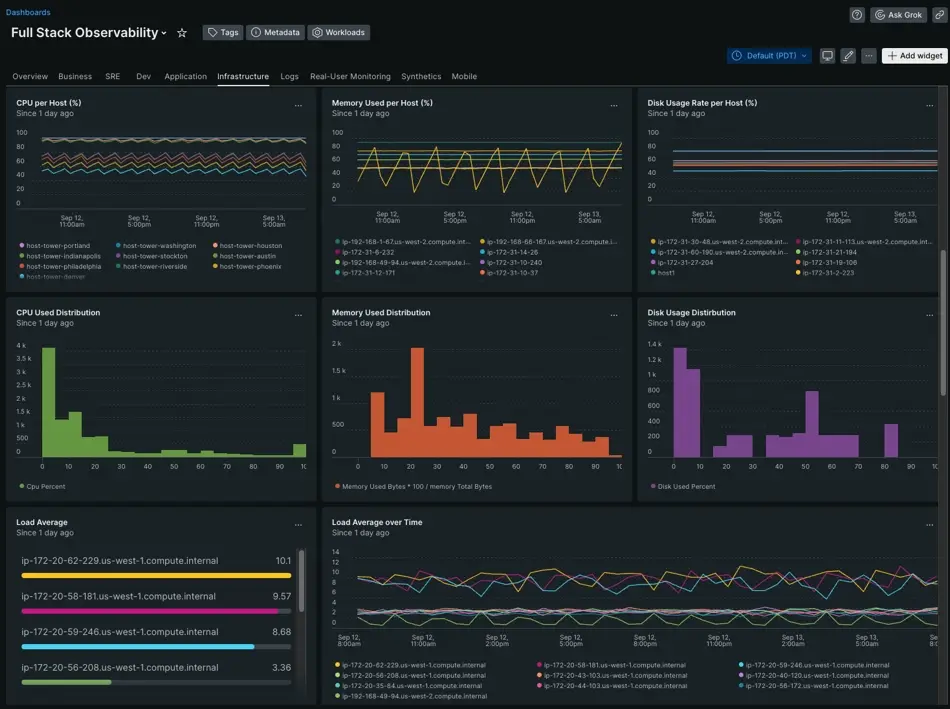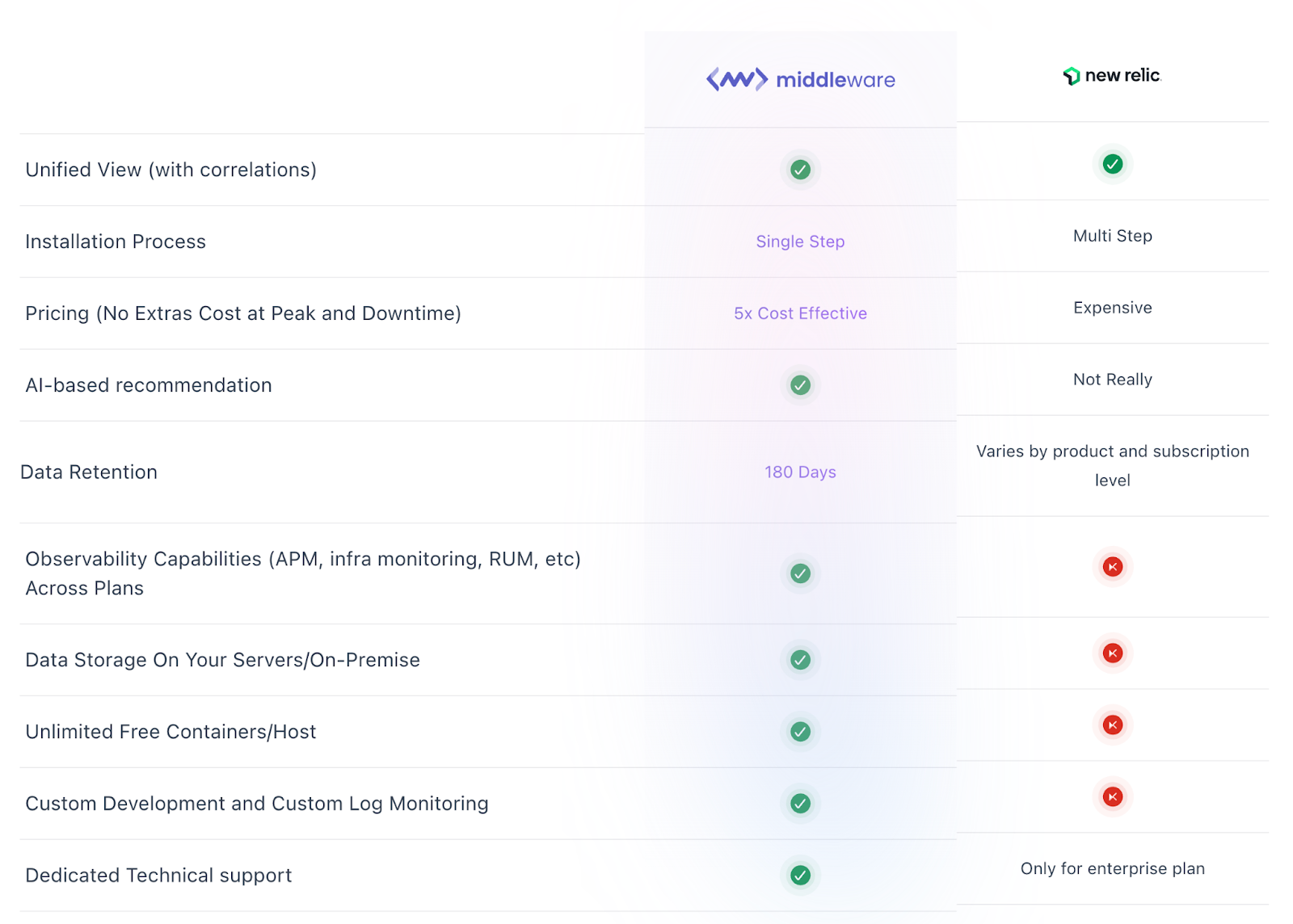New Relic has long been the gold standard in the observability space, renowned for its comprehensive monitoring and analytics capabilities. Since its founding in 2008, the company has empowered developers to optimize application performance, identify bottlenecks, and enhance overall user experience. In fact, their customer roster includes over 16,000 global organizations, such as Domino’s, Flight Centre, Tokopedia, and Serko.
However, beneath the surface, many customers have begun to voice concerns about New Relic’s complexity, steep learning curve, and – notably – pricing model. Most of them have experienced sticker shock as their observability costs skyrocket, leading to unforeseen expenses and budgetary strain.
NewRelic unethical billing
byu/jaxn indevops
To be more specific, customers have criticized New Relic’s pricing for its lack of transparency, with complex tiers, hidden costs, and per-user pricing. Additional costs for data storage, retention, and advanced features like AI-powered analytics and mobile monitoring can quickly add up. Long-term contracts, minimum commitment requirements, and limited flexibility in pricing also have been major.
“Our monthly spend with NewRelic surpassed the value we were getting out of it. The specific incident that triggered us to look at other vendors was when we turned on JVM-level telemetry and were not aware that it incurred a “custom event” cost, which skyrocketed our bill 10X for a month.”
John D’Emic, Co-Founder and CTO at Revenium
Furthermore, extra fees for premium support and implementation can surprise customers, making New Relic’s total cost of ownership higher than expected. Not to mention, the steep learning curve doesn’t sweeten the pot whatsoever.
Am i…stupid?
byu/Andrewofredstone innewrelic
This disparity between New Relic’s stellar observability ratings and its problematic pricing model raises questions about the true value proposition for customers.
If you are also wondering if it’s worth the investment, join Middleware as we delve into the details of New Relic’s pricing, explore its strengths and weaknesses, and compare it to our own observability solutions. Hopefully, it will help you make an informed decision and optimize your observability costs.
Complexity and lack of transparency
New Relic’s pricing tiers are divided into four categories: Free, Standard, Pro, and Enterprise.
- The Free tier offers 100 GB of data ingest, one full platform user, and unlimited basic users, but with limited features.
- The Standard tier costs $10 for the first full platform user and $99 per additional full platform user (up to 5 users). Core users are priced at $49 each. This tier also includes 100 GB of data ingest per month and ticketed support.
- The Pro tier offers unlimited full platform users priced at $349/user annually (or $418.80/month separately billed), $49 per core user, priority support with a 2-hour critical SLA, and advanced features. Data ingest beyond free allotment costs $0.40/GB (original) or $0.60/GB (Data Plus).
- The Enterprise tier provides custom pricing tailored to large, complex organizations. Features include all Pro-tier benefits, plus FedRAMP and HIPAA eligibility via Data Plus, the highest level of support with a 1-hour critical SLA, priority ticket routing, and options for tailored compliance and global scalability.
However, the complexity of New Relic’s pricing model makes it challenging for enterprises to accurately predict their costs. The various tiers and add-ons, such as data ingest costs, user-based pricing, and additional features, can lead to unexpected expenses. Furthermore, the platform’s pricing structure is not transparent, making it difficult for enterprises to understand the true cost of the service.
In contrast, Middleware offers a transparent and flexible pricing approach. For a limited time, all services are completely free of charge, allowing users to experience the platform’s benefits and effortlessly scale their infrastructure. After this period, Middleware follows a pay-as-you-go pricing plan, where costs are calculated based on actual usage rather than peak usage. This approach allows for significant cost savings, up to five times compared to New Relic’s pricing.
“Middleware’s pricing model incentivizes us to send more data, which means we get better results. This was very important for us because other tools would penalize us for higher data usage, leading to worse outcomes.”
— Rangaraj Tirumala, Founding Engineer at Hotplate
Overall, Middleware’s pricing is transparent, with no traditional pricing tiers and full access to all features without restrictions. Each use case has its own associated cost, ensuring that users only pay for what they use.
Regardless of how users choose to utilize or prioritize their data, they gain full access to all Middleware features without any restrictions. This transparent and scalable pricing model eliminates the complexity and uncertainty associated with traditional pricing tiers.
“Middleware turned out to be 10X more cost-effective than competitors, and it provided the comprehensive monitoring capabilities we needed. I really feel like I’m getting real value out of it for the dollars I spent. I’m able to actually see the use, which is not always true of a lot of these tools.”
— Rangaraj Tirumala, Founding Engineer at Hotplate
Data ingestion costs
New Relic charges $0.40 per GB for the standard/original data ingest option, and $0.60 per GB for Data Plus, after the 100 GB free tier is exceeded. For example, if an organization ingests 1TB (1024GB) of telemetry data per month, the first 100GB are included free in the New Relic plan.
The remaining 924GB are billed at $0.40 per GB under the standard data ingest option. That results in a monthly data charge of $369.60 (924GB x $0.40) beyond the free allowance. If the Data Plus option is selected—which adds advanced governance and extended retention—the cost rises to $0.60/GB for the additional data, totaling $554.40 per month for 924GB. Cost can quickly add up, especially for organizations with complex systems and high traffic.
Middleware also offers a free tier of 100 GB, but its Pay As You Go pricing plan is more cost-effective. Users pay only $0.3 per GB of metrics, logs, and traces beyond the free tier. For the same 1 TB of data ingest, users would pay approximately $270, representing significant savings of up to 22.86%.
Moreover, Middleware’s Ingestion Control Model provides unparalleled flexibility in managing data intake. This model enables users to optimize data ingestion by selecting only the most critical data, such as metrics, traces, logs, and profiling data. Users can further refine their data intake using granular filtering options, ingesting logs from specific services or filesystems.
While New Relic offers some data ingestion control features, including data ingest limits, data filtering, and data sampling, Middleware’s approach is more comprehensive and flexible. New Relic’s data filtering capabilities, for example, are based on attributes, whereas Middleware’s feature flags offer more precise control.
By controlling data ingestion, Middleware’s model helps enterprises:
- Reduce unnecessary data intake
- Lower data ingest costs
- Improve data quality and relevance
- Enhance overall observability
User-based pricing
New Relic’s user-based pricing model includes three user tiers: Basic users, who are free and ideal for viewing shared dashboards and alerts; Core users, priced at $49 per user per month, who have developer-level access to logs, telemetry, and error tracking; and Full platform users, who have access to all observability capabilities and start at $10 for the first user in Standard, with higher rates in Pro and Enterprise tiers.
While this tiering allows for flexible role-based permissions, the costs for Core and Full platform users can add up quickly for enterprises with multiple teams and large user counts.
In contrast, Middleware’s pricing is based on data ingestion and usage, eliminating user-based costs and providing a more scalable and flexible solution for enterprises. In essence, there are no restrictions on user access or roles, ensuring that all team members can utilize the platform without additional costs.
Implementation and onboarding
New Relic’s implementation and onboarding process has garnered criticism from users on social platforms, citing complexities and frustrations that hinder seamless integration.

The process is often described as overly technical, requiring extensive expertise, with a steep learning curve that slows adoption. Users struggle with agent installation, configuration, and integration with other tools, while insufficient documentation and support exacerbate the challenges. The lengthy onboarding process, sometimes spanning weeks or months, can be overwhelming due to the platform’s vast feature set.
In contrast, Middleware’s implementation and onboarding process has received praise for its simplicity and efficiency. Users report a significantly streamlined experience, with a lightweight agent installation that takes mere minutes to complete. Middleware’s extensive documentation and 24/7 expert support ensure a smooth transition, eliminating the need for extensive technical expertise.

With over 200 seamless integrations, users can easily adapt the platform to their existing ecosystem. Additionally, Middleware’s intuitive design enables users to quickly instrument services without encountering a steep learning curve.
According to Elijah Smith, Software Engineer III at Generation Esports,
“The integration with Middleware was significantly easier and less time-consuming. We received real-time support from the Middleware team via Slack, which made the entire experience seamless.”
— Elijah Smith, Software Engineer III at Generation Esports
Add-ons and bundles
New Relic offers various add-ons, including additional synthetic monitor checks, extended data retention, and Vulnerability Management. These add-ons can increase the overall cost of the platform, making it less competitive with alternative solutions.
On the other hand, Middleware includes all features and capabilities in its paid plan, eliminating the need for add-ons or bundles. This simple and transparent pricing structure ensures that enterprises only pay for what they use, without surprise costs or complexity.
Customer service
New Relic’s post-sales support has been a disaster for many customers. The technical support is mediocre at best, with customers struggling to get in touch with competent representatives over the phone. Email communication is slow, with templated responses that often point to help articles, rather than providing personalized solutions. This has led to painful and cumbersome integration processes between customers’ systems and New Relic.

In stark contrast, Middleware prioritizes customer satisfaction through responsive and knowledgeable support teams, flexible account management, proactive issue resolution, and transparent communication. By putting customers first, Middleware ensures that enterprises receive the support they need to optimize their observability and monitoring capabilities.
“Middleware’s team is incredibly responsive to feedback and often implements requested features or fixes within days. I have a monthly sync with one of their team members, and it’s something I actually look forward to. They listen to our concerns and actively work with us to make the platform better.”
— Aaron Hawkey, Co-Founder & CTO, Generation Esports
New Relic v/s Middleware
Here’s a side-by-side comparison of New Relic v/s Middleware based on key factors:

What are the people saying?
We analyzed user reviews on G2, a leading software buying marketplace, to see what users are saying about both of the tools:
New Relic’s review on G2
Despite New Relic’s 4.3-star rating out of 5 on G2, numerous customers have publicly expressed disappointment with the platform, citing various reasons.

Middleware’s review on G2
Middleware holds a rating of 4.5 stars out of 5 on G2. We analyzed our reviews, and some users referred us to a leading cost-effective New Relic alternative:

Final verdict
New Relic is undoubtedly a great platform, but its complex pricing, lack of transparency, restrictive scalability, and disappointing customer support have led to widespread dissatisfaction. In contrast, Middleware excels in these areas, offering a compelling alternative through its flexible pricing, scalable architecture, and unwavering commitment to customer success.
With Middleware, enterprises have achieved:
- 10X reduction in observability costs
- 75% improvement in operational efficiency
- 20% faster MTTR
- 25% improvement in developer productivity
“For people, by people. Middleware isn’t just another company’s profit machine; it’s a platform that actually works with us. The experience has been great, and it’s made a huge difference in how we handle observability.”
— Elijah Smith, Software Engineer III at Generation Esports
So why wait? Join the ranks of satisfied enterprises who’ve made the switch to Middleware and discover a better way to optimize performance, reduce costs, and drive success. Book a demo today!




